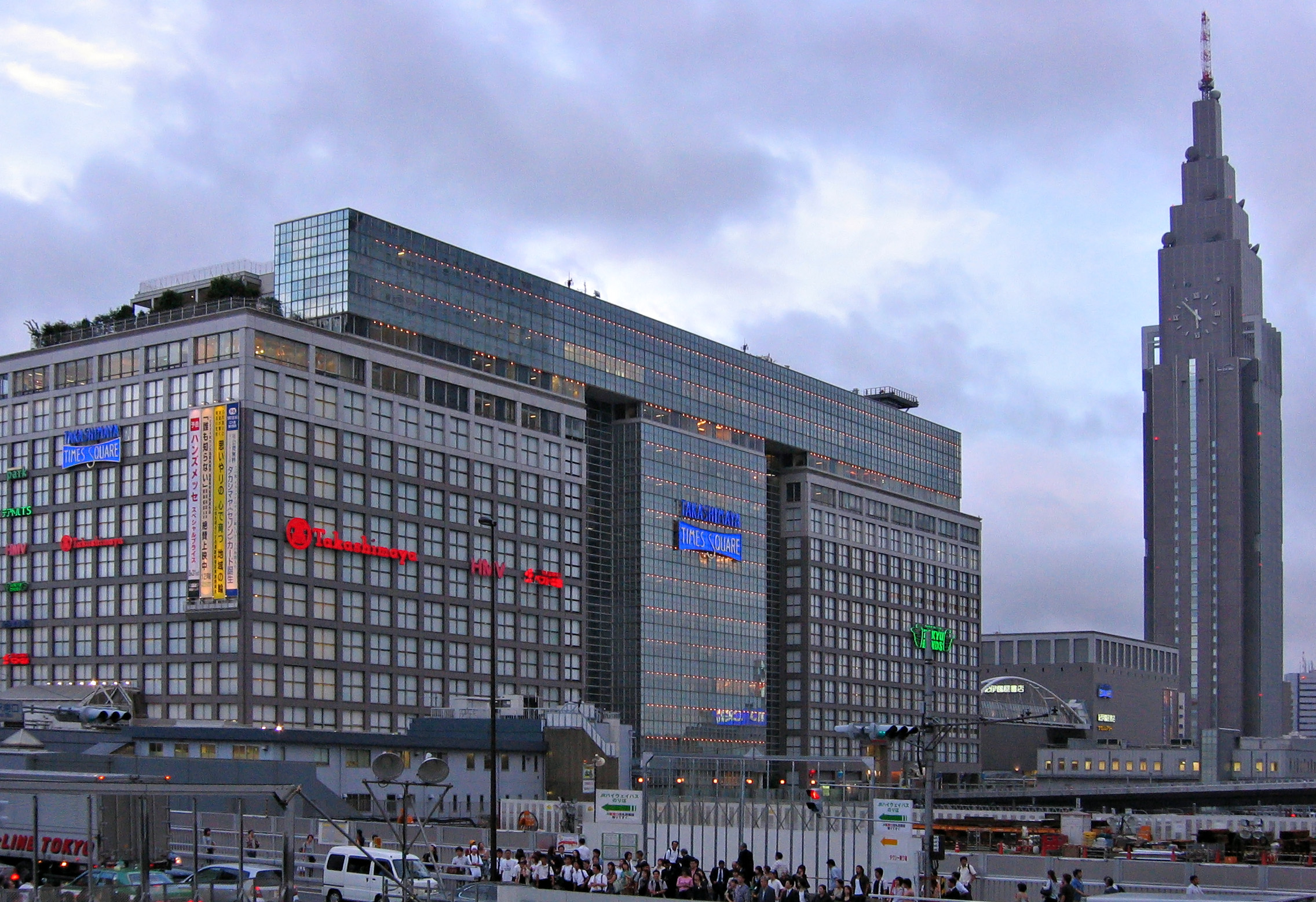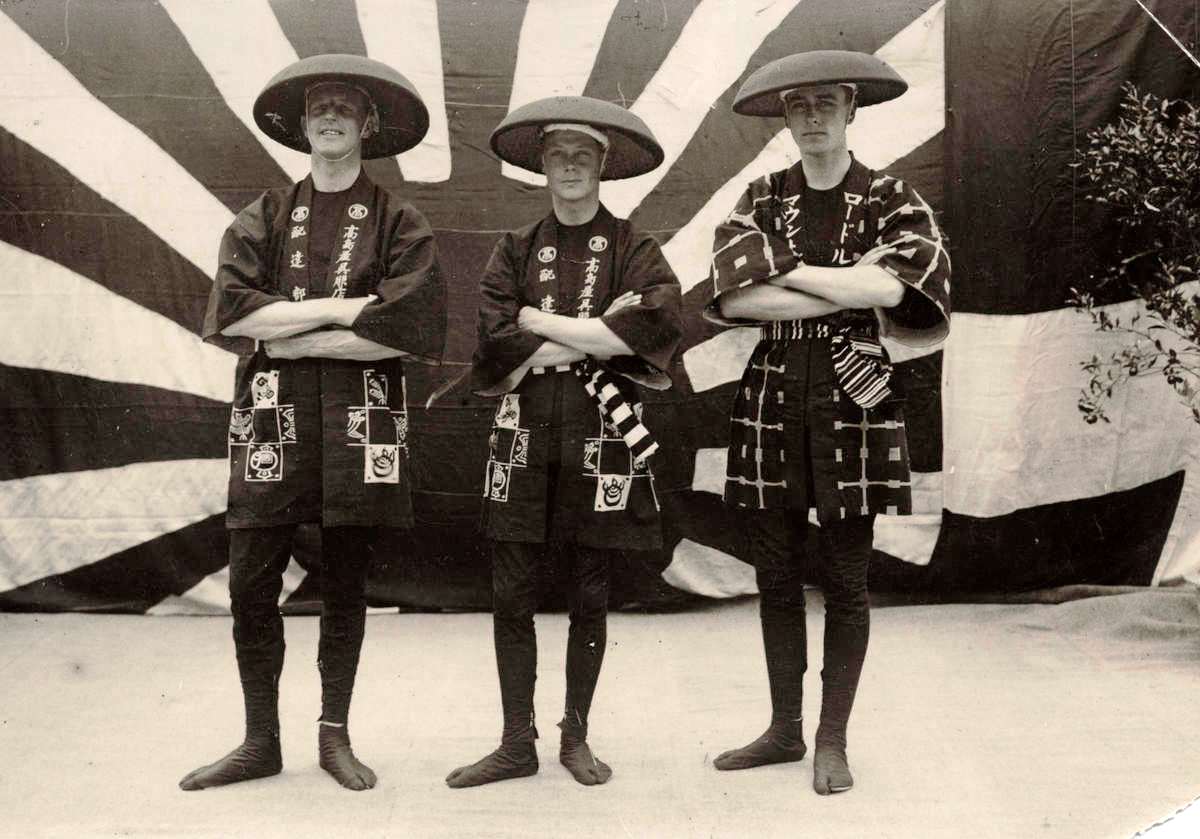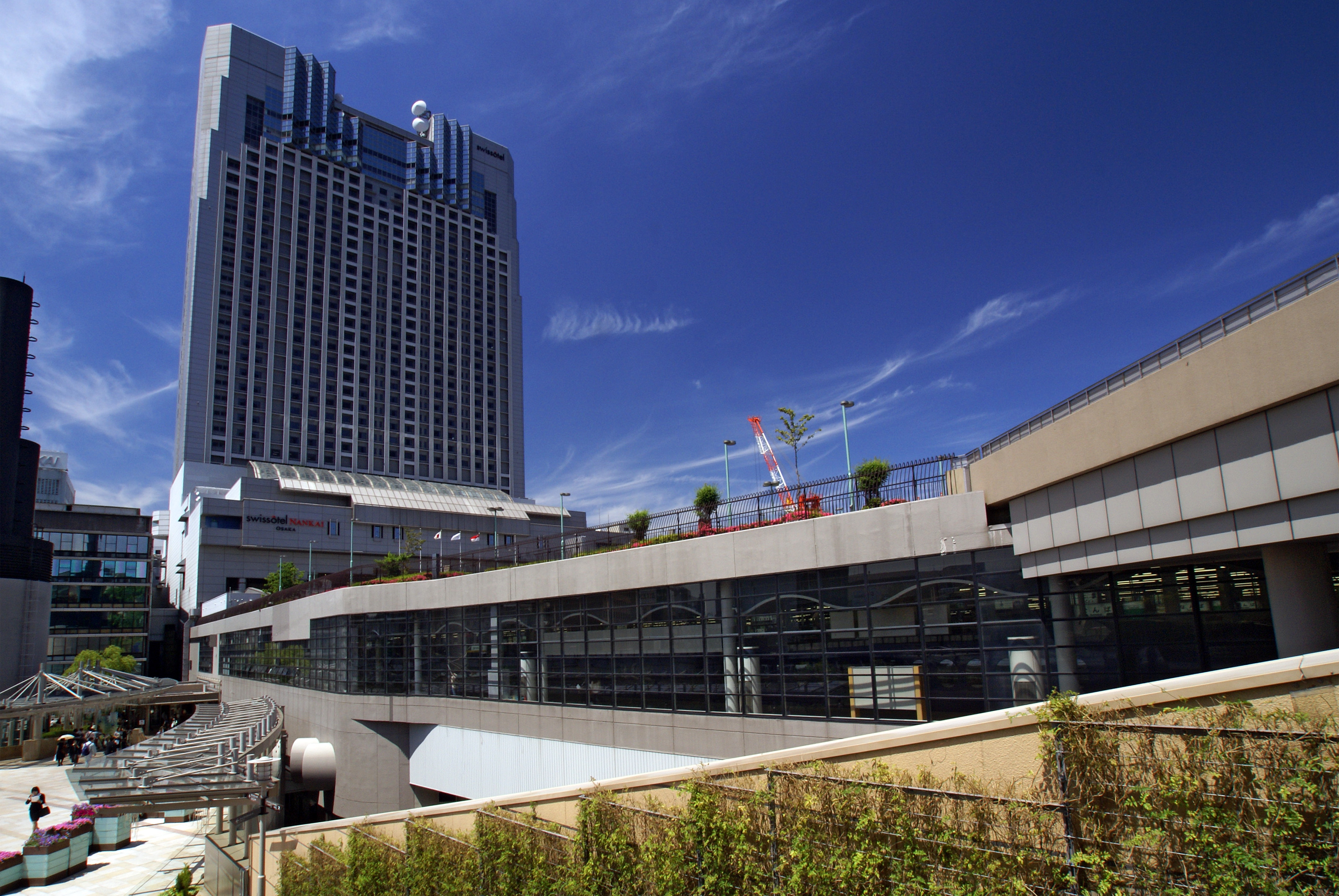|
Takashimaya
is a Japanese multinational corporation operating a department store chain carrying a wide array of products, ranging from wedding dresses and other apparel to electronics and flatware. It has more than 12 branches strategically located in 2 regions, and 4 international branches around Asia. Takashimaya has been a member of the International Association of Department Stores from 1962 to 1997. Takashimaya was listed at #1197 on the Forbes Global 2000 list for 2006. Takashimaya is a member of the Sanwa Group keiretsu. History The first Takashimaya store was opened in Kyoto in 1831 as a sole proprietorship owned by Shinshichi Iida, a merchant from present-day Fukui Prefecture. The original store in Kyoto was only 3.6 square meters in area and specialized in selling gofuku (formal kimono). A second Kyoto store opened in 1893, followed by a Tokyo store in 1897 and an Osaka store in 1898. Takashimaya was incorporated as a gomei kaisha (unlimited liability company) in 1909 ... [...More Info...] [...Related Items...] OR: [Wikipedia] [Google] [Baidu] |
Takashimaya Times Square
is a Japanese multinational corporation operating a Department stores in Japan, department store chain carrying a wide array of products, ranging from wedding dresses and other apparel to electronics and flatware. It has more than 12 branches strategically located in 2 regions, and 4 international branches around Asia. Takashimaya has been a member of the International Association of Department Stores from 1962 to 1997. Takashimaya was listed at #1197 on the Forbes Global 2000 list for 2006. Takashimaya is a member of the Sanwa Group keiretsu. History The first Takashimaya store was opened in Kyoto in 1831 as a sole proprietorship owned by Shinshichi Iida, a merchant from present-day Fukui Prefecture. The original store in Kyoto was only 3.6 square meters in area and specialized in selling gofuku (formal kimono). A second Kyoto store opened in 1893, followed by a Tokyo store in 1897 and an Osaka store in 1898. Takashimaya was incorporated as a gomei kaisha (unlimited liabi ... [...More Info...] [...Related Items...] OR: [Wikipedia] [Google] [Baidu] |
Namba Station
is a name shared by two railway stations in the Namba district of Chūō-ku, Osaka, Japan. One is owned by Nankai Electric Railway, while the other is by the Osaka Metro. The names of both stations are written in ''hiragana'' on signage within the stations, because the ''kanji'' "難波" can be also read "Naniwa". However, the name of both stations officially employs kanji, printed on train tickets. They are close to JR Namba Station and Ōsaka Namba Station. Lines *Nankai Electric Railway (NK01) **Nankai Main Line ** Nankai Koya Line * ** (M20) ** (S16) **(Y15) ;Connecting Stations * Ōsaka Namba Station (renamed from Kintetsu Namba Station in 2009) **Kintetsu Namba Line ** Hanshin Namba Line * JR Namba Station (renamed from Minatomachi Station in 1994) **Kansai Main Line (Yamatoji Line) Nankai Electric Railway Layout There are nine bay platforms with eight tracks on the third floor. Nankai Terminal Building is located in front of the station. Ticket gates are located ... [...More Info...] [...Related Items...] OR: [Wikipedia] [Google] [Baidu] |
Osaka
is a designated city in the Kansai region of Honshu in Japan. It is the capital of and most populous city in Osaka Prefecture, and the third most populous city in Japan, following Special wards of Tokyo and Yokohama. With a population of 2.7 million in the 2020 census, it is also the largest component of the Keihanshin Metropolitan Area, which is the second-largest metropolitan area in Japan and the 10th largest urban area in the world with more than 19 million inhabitants. Osaka was traditionally considered Japan's economic hub. By the Kofun period (300–538) it had developed into an important regional port, and in the 7th and 8th centuries, it served briefly as the imperial capital. Osaka continued to flourish during the Edo period (1603–1867) and became known as a center of Japanese culture. Following the Meiji Restoration, Osaka greatly expanded in size and underwent rapid industrialization. In 1889, Osaka was officially established as a municipality. The const ... [...More Info...] [...Related Items...] OR: [Wikipedia] [Google] [Baidu] |
H2O Retailing
is a stock holding company which is a member company of Hankyu Hanshin Toho Group. This article covers about a subsidiary which owns 2 department store chains: Hankyu Department Store and Hanshin Department Store. History *March 7, 1947: The department store business was separated from Keihanshin Kyuko Railway Company (present: Hankyu Hanshin Holdings, Inc.) and Hankyu Department Stores, Inc. was founded. *October 1, 2007: "Hankyu Department Stores, Inc." subsidiarized "the Hanshin Department Store, Ltd." and was renamed "H2O Retailing Corporation". The department store business was separated to the newly founded company, "Hankyu Department Stores, Inc." *October 1, 2008: Hankyu Department Stores, Inc. consolidated the Hanshin Department Store, Ltd. and was renamed "Hankyu Hanshin Department Stores, Inc." See also *Hankyu Hanshin Toho Group **H2O Retailing Corporation ***Hankyu Hanshin Department Stores, Inc. **** Hankyu Department Store ****Hanshin Department Store **Hanky ... [...More Info...] [...Related Items...] OR: [Wikipedia] [Google] [Baidu] |
Department Stores In Japan
Department stores in Japan are referred to as ''hyakkaten'' () or ''depāto'' (デパート), an alteration of the English term. History The first "modern-style" department store in Japan was Mitsukoshi, founded in 1904, which has its root as a kimono store called Echigoya from 1673. When the roots are considered, however, Matsuzakaya has an even longer history, dated from 1611. The kimono store changed to a department store in 1910. In 1924, Matsuzakaya store in Ginza allowed street shoes to be worn indoors, something innovative at the time. These former kimono shop department stores dominated the market in its earlier history. They sold, or instead displayed, luxurious products, which contributed to their sophisticated atmospheres. Another origin of the Japanese department store is from railway companies. There have been many private railway operators in the nation and, from the 1920s, they started to build department stores directly linked to their lines' termini. Seibu and ... [...More Info...] [...Related Items...] OR: [Wikipedia] [Google] [Baidu] |
Keiretsu
A is a set of companies with interlocking business relationships and shareholdings. In the legal sense, it is a type of informal business group that are loosely organized alliances within the social world of Japan's business community. The ''keiretsu'' system dominated the Japanese economy for the second half of the 20th century, following the dissolution of the '' zaibatsu'' after World War II, and, to a lesser extent, continues to do so in the early 21st century. The members' companies own small portions of the shares in each other's companies, centered on a core bank; this system helps insulate each company from stock market fluctuations and takeover attempts, thus enabling long-term planning in projects. It is a key element of the manufacturing industry in Japan. History The prototypical ''keiretsu'' appeared during the Japanese economic miracle which followed World War II, amid the dissolution of family-controlled vertical monopolies called '' zaibatsu''. The ''zaib ... [...More Info...] [...Related Items...] OR: [Wikipedia] [Google] [Baidu] |
Sanwa Group
The was a leading Japanese keiretsu, based in Osaka, between World War II and the Japanese asset price bubble in the early 1990s. It remains in existence as a jointly held company called . Sanwa Bank was a major financier for the textile industry in the 1950s. After arranging an affiliation between Ube Industries and Nippon Rayon in 1954, Sanwa began promoting industrial transactions between its major customers, formalizing the process in the early 1960s through the establishment of special promotion units. In 1968, Sanwa arranged the merger of the Nissho and Iwai trading companies to form Nissho Iwai (now Sojitz), creating a large general trading company to cater to its customers. The three largest members of the group ( Hitachi Shipbuilding, Ube Industries and Teijin) had relatively independent positions with no cross-shareholdings. The development of this group paralleled the development of the Fuyo Group and DKB Group around alliances between major banks and trading compan ... [...More Info...] [...Related Items...] OR: [Wikipedia] [Google] [Baidu] |
Forbes Global 2000
The ''Forbes'' Global 2000 is an annual ranking of the top 2000 public companies in the world, published by ''Forbes'' magazine. "The Global 2000" annual ranking is assembled by ''Forbes'' using a weighted assessment of four metrics: sales, profit, assets and market value. The list has been published since 2003. 2022 list In 2022, the ten largest companies as calculated by this method were: 2021 list In 2021, the ten largest companies as calculated by this method were: 2020 list In 2020, the ten largest companies as calculated by this method were: 2019 list In 2019, the ten largest companies as calculated by this method were: 2018 list In 2018, the ten largest companies as calculated by this method were: As a group, the Forbes Global 2000 in year 2018 accounts for $39.1* trillion in sales, $3.2 trillion in profit, $189* trillion in assets and $56.8* trillion in market value. By industry sector The top-ranked companies in each industry sector are as follows. ... [...More Info...] [...Related Items...] OR: [Wikipedia] [Google] [Baidu] |
International Association Of Department Stores
The International Association of Department Stores (IADS) is a retail trade association founded in 1928 by a group of department stores with the goal of introducing modern management methods derived from the scientific management movement to their retail format. History In the middle of the 1920s, American management theories, such as the scientific management of F.W. Taylor, started spreading in Europe. The International Management Institute (I.M.I.) was established in Geneva in 1927 to facilitate the diffusion of such ideas. Edward Filene, a member of the I.M.I. Board of Directors and Chairman of Filene's department store in Boston, decided—with Emile Bernheim of Innovation in Brussels (later known as Galeria Inno), Pierre Laguionie of the Printemps in Paris and Ragnar Sachs of Nordiska Kompaniet in Stockholm—to apply I.M.I.'s teachings about scientific management to the department store retail format. They created the Association of Department Stores in Paris ... [...More Info...] [...Related Items...] OR: [Wikipedia] [Google] [Baidu] |
Edward VIII With His Staff Wearing Happi 1922
Edward is an English given name. It is derived from the Anglo-Saxon name ''Ēadweard'', composed of the elements '' ēad'' "wealth, fortune; prosperous" and '' weard'' "guardian, protector”. History The name Edward was very popular in Anglo-Saxon England, but the rule of the Norman and Plantagenet dynasties had effectively ended its use amongst the upper classes. The popularity of the name was revived when Henry III named his firstborn son, the future Edward I, as part of his efforts to promote a cult around Edward the Confessor, for whom Henry had a deep admiration. Variant forms The name has been adopted in the Iberian peninsula since the 15th century, due to Edward, King of Portugal, whose mother was English. The Spanish/Portuguese forms of the name are Eduardo and Duarte. Other variant forms include French Édouard, Italian Edoardo and Odoardo, German, Dutch, Czech and Romanian Eduard and Scandinavian Edvard. Short forms include Ed, Eddy, Eddie, Ted, Teddy and Ned. ... [...More Info...] [...Related Items...] OR: [Wikipedia] [Google] [Baidu] |
Sole Proprietorship
A sole proprietorship, also known as a sole tradership, individual entrepreneurship or proprietorship, is a type of enterprise owned and run by one person and in which there is no legal distinction between the owner and the business entity. A sole trader does not necessarily work alone and may employ other people. The sole trader receives all profits (subject to taxation specific to the business) and has unlimited responsibility for all losses and debts. Every asset of the business is owned by the proprietor, and all debts of the business are that of the proprietor. It is a "sole" proprietorship in contrast with a partnership, which has at least two owners. Sole proprietors may use a trade name or business name other than their or its legal name. They may have to trademark their business name legally if it differs from their own legal name, with the process varying depending upon country of residence. Advantages and disadvantages Registration of a business name for a sole propr ... [...More Info...] [...Related Items...] OR: [Wikipedia] [Google] [Baidu] |




